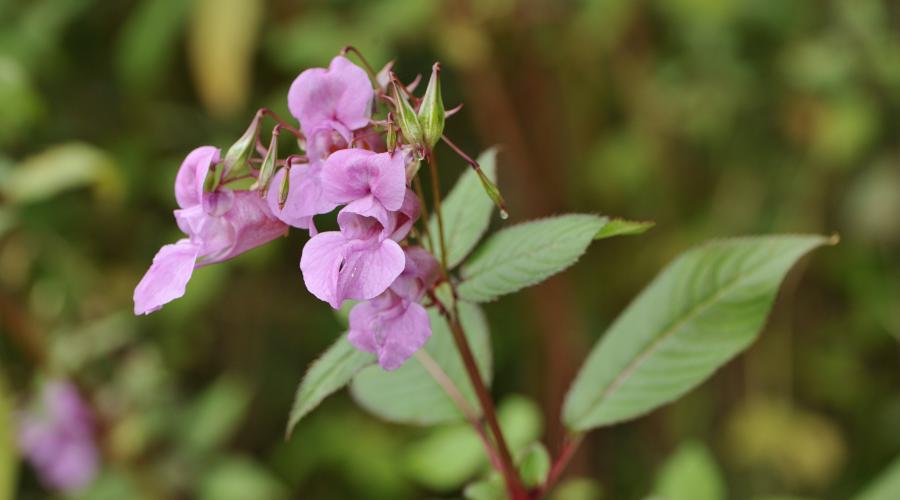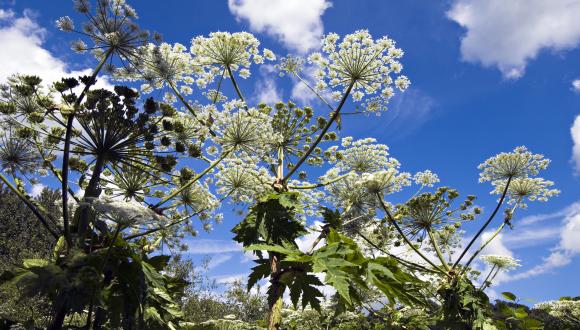
Invasive non-native plants
Most of the many non-native plants growing in the wild in Scotland cause no real issues. But some are highly problematic.
Invasive non-native plants invade habitats, spread quickly and outcompete native vegetation. Some can be destructive, causing riverbanks, built structures and surfaces to destabilise. A few can adversely affect human and animal health.
In Scotland, four invasive plants cause the most damage:
- rhododendron (Rhododendron ponticum)
- Japanese knotweed (Fallopia japonica)
- giant hogweed (Heracleum mantegazzianum)
- Himalayan balsam (Impatiens glandulifera)
Two other species have great potential to be invasive in certain habitats:
- American skunk cabbage (Lysichiton americanus)
- giant rhubarb (Gunnera tinctoria)
Japanese knotweed
Japanese knotweed causes particular problems for homeowners. Mortgage lenders have been known to refuse mortgages for properties where the plant occurs. It can also cause disputes between neighbours if one party fails to control the spread of Japanese knotweed to the other party’s property.
You can engage a specialist weed control company to develop a plan of treatment and control to overcome such problems.
Homeowners and property surveyors can find advice on:
- Invasive weed control on the Property Care Association website
- Japanese knotweed on the Royal Institution of Chartered Surveyors website
Legal responsibilities
By law, you must ensure that any non-native plants growing on your land don’t spread into the wild. This includes natural spread – e.g. by seed dispersal – and spread caused by the dumping of plant material or contaminated soil.
You should also control invasive plants on your land to prevent them from causing a nuisance to others. For example, you could be prosecuted for causing a private nuisance if you let Japanese knotweed spread to a neighbour's property.
Learn more about the law on non-native species in Scotland.
Control
The most suitable methods of control will depend on the invasive plant being treated and various site-specific factors.
Find advice:
- for businesses on Japanese knotweed, giant hogweed and other invasive weeds on the NetRegs website
- for homeowners on invasive weed control on the Property Care Association website
- for gardeners on invasive non-native species on the Royal Horticultural Society website
- on how to minimise use of herbicides in our integrated pest management handbook
Communities wishing to tackle problem invasives may like to use the Local Action Group Toolkit on the GB Non-native Species Secretariat website.
Specialist contractors often need to be engaged to control invasive plants effectively, especially if they affect residential property or development sites.
Find out how to help tackle invasive non-native species more generally.
Disposal
Invasive plant material and contaminated soils are types of ‘controlled waste’. Legally, you may only dispose of such waste at an appropriately licensed landfill site.
To learn more, view the SEPA Technical Guidance Note on On-site management of Japanese knotweed and associated contaminated soils.
Funding
Funding to support the control of invasive non-native plants is available via the Scottish Rural Development Programme. Its Agri-Environment Climate Scheme is the main source of funding for land managers, farmers and foresters in Scotland.
Find out more
News release - Trial finds woolly warriors effective against giant hogweed
News release - Invasive species the biggest pressure on nature sites




